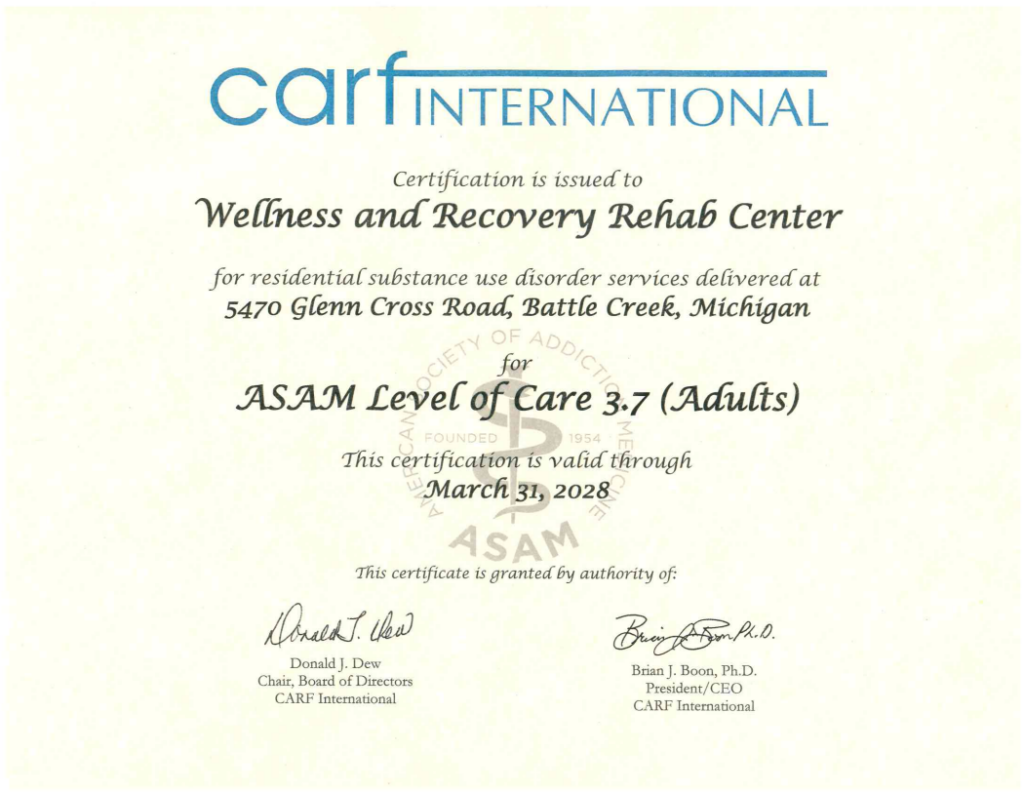While many people wonder, “How long are inpatient rehab programs?”, the answer is not always straightforward.
Located in Michigan, we offer a range of programs designed to support individuals on their journey to lasting recovery.
We specialize in dual diagnosis treatment, trauma-informed care, and holistic therapies, ensuring a personalized approach to healing.
Addiction is more than just physical dependence; it involves:
A longer inpatient rehab stay helps individuals understand their addiction on a deeper level and develop sustainable recovery strategies.
Rehab is not only about detoxification – it is about learning how to navigate life without substance use. Extended inpatient care provides time for individuals to:
A rushed process may leave individuals vulnerable to setbacks, as they may not have fully developed the skills they need for long-term sobriety.
Longer inpatient programs offer a more gradual transition. They allow individuals to practice sober living in a supportive environment before reintegrating into society. This fosters stronger self-awareness and emotional resilience, reducing the likelihood of relapse.
No two individuals experience addiction in the same way, which is why a personalized treatment plan is critical. Instead of following a rigid timeline, inpatient rehab programs should be tailored to each person’s unique needs.
From the moment someone enters rehab, medical professionals assess multiple factors that influence the ideal program length, including:
These assessments ensure that each person receives the appropriate level of care, increasing their chances of long-term recovery.
A well-structured rehab program strikes a balance between professional guidance and personal growth.
So, how long are inpatient rehab programs? Longer treatment stays can help you take charge of your recovery. Then, over time, you can transition smoothly from intensive care to greater independence.
This balance ensures that when you leave the facility, you feel confident in your ability to maintain sobriety.
Establishing goals during rehab gives individuals a clear direction and measurable progress points. These goals can be categorized into three main areas:
Below is more information about the typical durations of inpatient rehab programs that are designed to meet your individual needs:
This level of care is also effective if you have experienced a relapse after maintaining sobriety. A brief, focused stay can help you regain momentum and smoothly transition to outpatient treatment.
Short-term rehab ensures safety and provides the necessary care for a successful transition to recovery.
Without this follow-up care, the risk of relapse significantly increases.
A 30-day rehab is best suited for individuals with moderate addiction who do not have severe co-occurring mental health disorders.
The program provides more depth than a short-term program. However, the level of support may not always be enough if you or a loved one struggle with long-term substance use issues.
Additionally, if you have mild mental health concerns, 30-day programs often incorporate dual diagnosis treatment. However, if you have more severe symptoms, you may benefit from an intensive inpatient stay.
Unlike short-term programs, a 30-day rehab includes a more structured approach to addiction treatment. This period allows you to undergo medical detox if necessary. After detox, you can participate in intensive therapy sessions that address the underlying causes of substance use.
30-day programs also utilize various evidence-based treatments to help you develop healthier thought patterns, including:
One of the key components of a 30-day inpatient program is relapse prevention. During this time, you will:
Structured daily routines help reinforce positive behaviors, and therapy sessions guide you towards sustainable recovery strategies.
As you reach the end of your program, the focus shifts to creating personalized aftercare plans. Depending on your needs, you may transition to:
For these individuals, a 60- to 90-day rehab program provides the time needed to stabilize both conditions simultaneously, increasing the chances of lasting recovery.
Additionally, individuals with a history of repeated relapse often benefit from extended care. Multiple relapses during addiction recovery can indicate the need for intensive support. A 60 or 90 day stay allows individuals to:
Breaking free from addiction requires a fundamental shift in thought patterns and responses to stress. Extended inpatient rehab provides the necessary time for these changes to take root.
The extra weeks in treatment help reinforce positive behaviors, allowing you to practice new coping mechanisms repeatedly until they become second nature. This approach significantly reduces the likelihood of falling back into old patterns once treatment ends.
A longer treatment period is often necessary for meaningful recovery from severe addiction. This is especially true for cases involving:
Many individuals in long-term residential treatment have histories of trauma, including:
Here are some key factors that influence how long an individual may need to stay in inpatient rehab:
Every individual responds to treatment at a different pace. While some individuals quickly adapt to the therapeutic environment, others need more time to:
At Wellness and Recovery, we regularly assess progress to determine whether an individual is ready to move forward. The ultimate goal is to ensure that you have the confidence to maintain sobriety after treatment.
People who can transition out of inpatient rehab sooner often have:
In contrast, those who lack a reliable support network may benefit from a longer inpatient stay to build resilience before returning to everyday life. This includes individuals facing unstable housing, toxic relationships, or limited access to follow-up care.
Financial factors also influence how long an individual can stay in inpatient rehab. Rehab centers work with insurance providers, but coverage limitations may impact the duration of treatment.
Some insurance plans cover only a predetermined number of days in inpatient rehab. Others may require ongoing assessments to justify extended stays. This makes it essential for individuals to work closely with treatment providers to ensure continued coverage.
Sustained sobriety requires consistent engagement with recovery resources after inpatient rehab. Without ongoing care, individuals risk reverting to old patterns, especially when facing stress and emotional difficulties.
Continued care at Wellness and Recovery includes:
We also offer a range of outpatient programs to ease the shift from intensive residential treatment to self-managed recovery. These include:
If you require ongoing care but do not need 24/7 supervision, a PHP offers an intensive yet non-residential treatment structure. The program provides comprehensive medical and psychological support, often involving five to seven days of therapy per week.
This level of care is suitable if you still require intensive therapy but are stable enough to reside outside of an inpatient facility.
These programs offer intensive therapy multiple times a week while allowing you to maintain:
As you move further into independent recovery, an outpatient drug program serves as a long-term resource for maintaining sobriety. These programs offer flexible therapy schedules, typically requiring attendance once or twice per week.
This level of care allows you to fully engage in their daily responsibilities while staying connected to ongoing treatment support.
Recovery is not about a fixed timeline – it’s about what works best for you. At Wellness and Recovery, we understand that everyone’s healing process is different. This is why we offer inpatient rehab programs tailored to your unique needs.
Whether you require a short-term stay to regain stability or a longer program for deep-rooted healing, our expert team is here to guide you toward the right choice.
Don’t leave your recovery to guesswork – let us help you create a treatment plan that prioritizes your well-being and long-term success.




